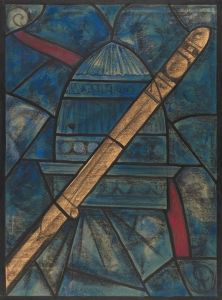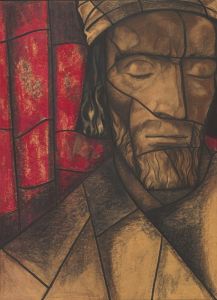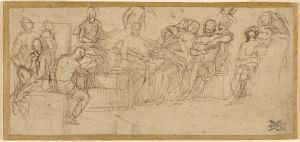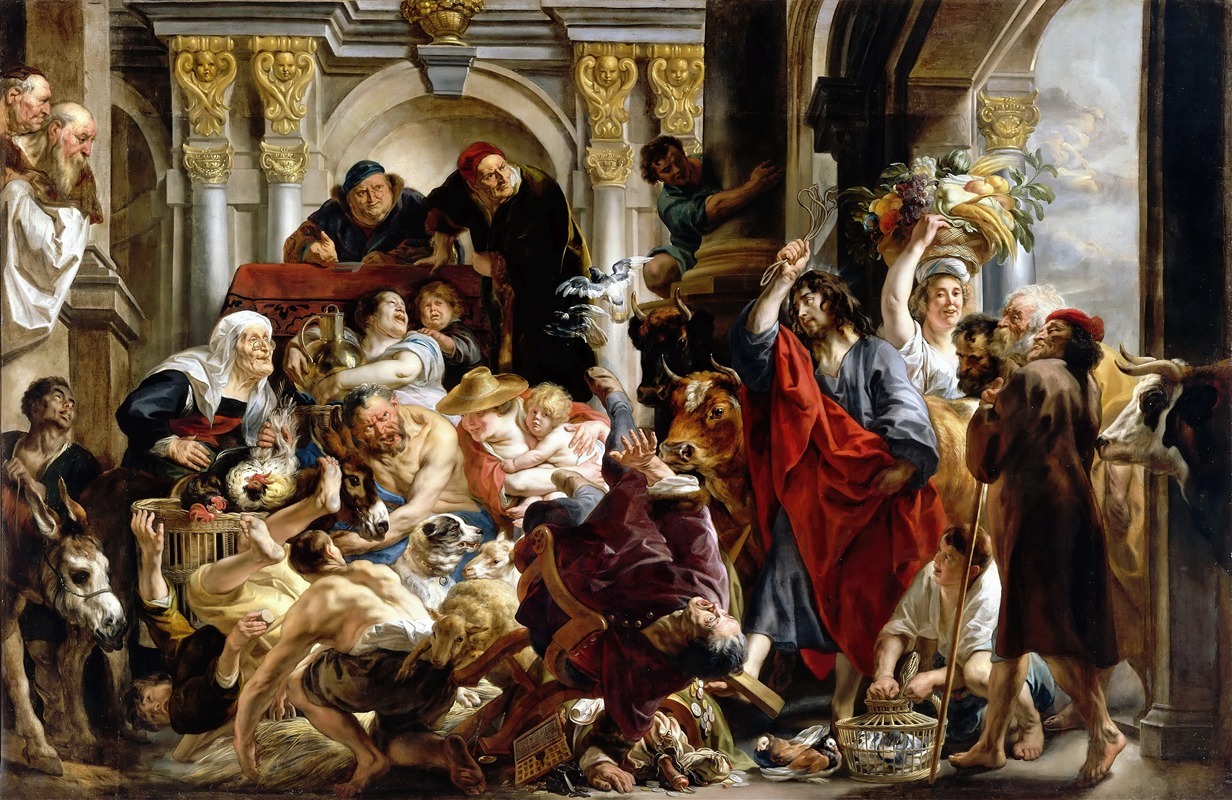
Jesus Driving The Merchants From The Temple
A hand-painted replica of Jacob Jordaens’s masterpiece Jesus Driving The Merchants From The Temple, meticulously crafted by professional artists to capture the true essence of the original. Each piece is created with museum-quality canvas and rare mineral pigments, carefully painted by experienced artists with delicate brushstrokes and rich, layered colors to perfectly recreate the texture of the original artwork. Unlike machine-printed reproductions, this hand-painted version brings the painting to life, infused with the artist’s emotions and skill in every stroke. Whether for personal collection or home decoration, it instantly elevates the artistic atmosphere of any space.
Jacob Jordaens' painting Jesus Driving the Merchants from the Temple is a Baroque artwork that depicts the biblical scene of Jesus expelling the merchants and money changers from the temple in Jerusalem. This event, described in all four canonical Gospels (Matthew 21:12–13, Mark 11:15–17, Luke 19:45–46, and John 2:13–16), is often referred to as the "Cleansing of the Temple." The scene symbolizes Jesus' condemnation of commercial activities in a sacred space, emphasizing the sanctity of worship and the rejection of greed.
Jacob Jordaens (1593–1678) was a prominent Flemish Baroque painter, known for his dynamic compositions, vivid use of color, and skillful depiction of dramatic scenes. While Jordaens is often associated with religious and mythological themes, he was also known for his genre paintings and portraits. He was a contemporary of Peter Paul Rubens and Anthony van Dyck, and his work reflects the influence of Rubens, particularly in its energetic style and robust figures.
In Jesus Driving the Merchants from the Temple, Jordaens employs the dramatic chiaroscuro and dynamic movement characteristic of Baroque art. The composition is filled with tension and action, as Jesus is shown in the act of driving out the merchants with a whip. The figures in the painting are rendered with expressive gestures and intense emotions, capturing the chaos and turmoil of the moment. The use of light and shadow enhances the dramatic impact of the scene, drawing attention to Jesus as the central figure.
The painting reflects the Baroque era's emphasis on emotional intensity and theatricality, as well as its focus on religious themes. Jordaens' interpretation of the Cleansing of the Temple aligns with the Counter-Reformation's emphasis on the moral and spiritual authority of Christ, a theme that resonated strongly in Catholic regions like Flanders during the 17th century.
The exact date of the painting's creation is not definitively known, but it is believed to have been completed during Jordaens' mature period, when he was producing some of his most accomplished works. The painting is held in a museum collection, though specific details about its current location or provenance may vary depending on the version of the work, as Jordaens and his workshop often produced multiple versions of popular compositions.
As with many Baroque religious paintings, Jesus Driving the Merchants from the Temple serves both as a work of art and as a didactic tool, intended to inspire devotion and convey moral lessons to its viewers. Jordaens' skillful execution and dramatic interpretation of the biblical narrative make this painting a notable example of his religious oeuvre.





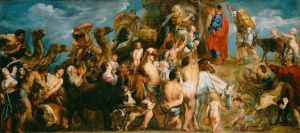
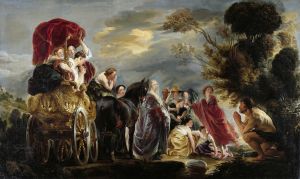
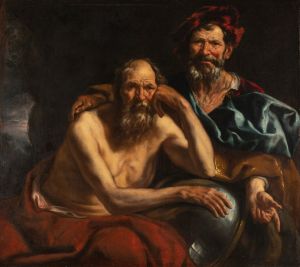
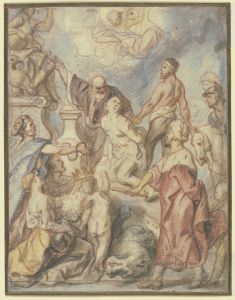
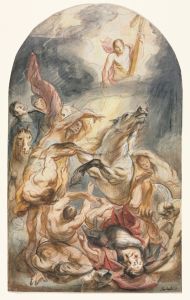
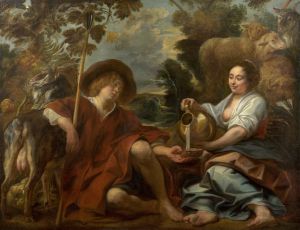
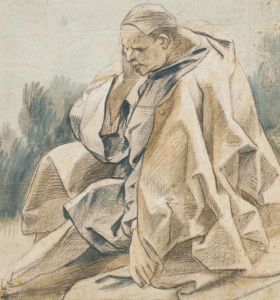
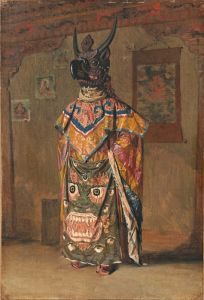
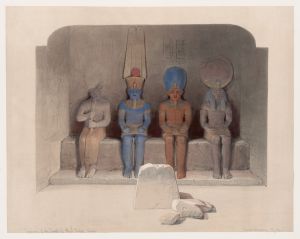
![View from under the portico of the Temple of Dendera [Dandara].](/imgs/217571/s/david-roberts-view-from-under-the-portico-of-the-temple-of-dendera-dandara-cfe01457.jpg)
